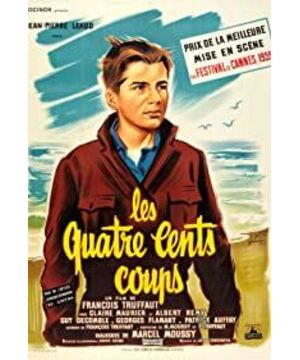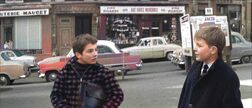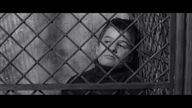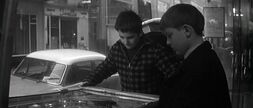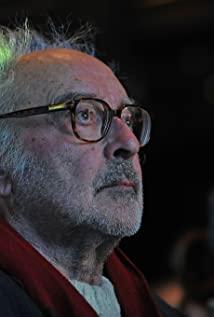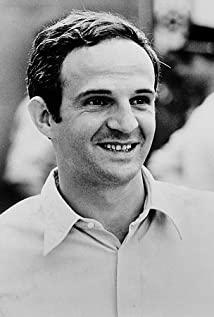During the long period of time when I first came into contact with film theory (before I just watched films for interest, I didn’t know how to consciously raise the sound I heard to the height of theory to analyze), I had a lot to say about Andre Bart. There's a near-infinite adoration for Zan's depth-of-field and long-lens theory. To be honest, it is the blindness and naiveté of someone eager to bid farewell to the impoverished state of film theory: like a hunter who never hits a prey, but one day he suddenly hits one and claims to have hit one.'s the best. So I fell into a misunderstanding: I only like movies with depth-of-field shots, which tend to be art films, and I hate movies with lots of montage shots, which tend to be commercial. However, after five years, if you think about it more comprehensively and carefully, if a movie only has depth of field shots (long shots), then the length of the movie will be equal to the time in reality, which is impossible, and there is no need for that. As André Bazin (the father of the new wave of French cinema) himself said: "But this narrative (long-shot narrative) by no means means to write off the achievements of montage, but to give them a relativity, a new idea." Only by increasing the authenticity of the image can the supplement of abstraction be justified "(" The Evolution of Film Language"). So far, I have accepted the combined use of depth-of-field and montage lenses in films. And more deeply aware of the background of the era of the depth-of-field lens proposed and emphasized by Andre Bazin-"by 1938, we can see the same form of storytelling almost everywhere" ("The evolution of film language") — Andre Bazin was going to be a big advocate of depth-of-field shots in an era of montage footage. He summed up and extracted a systematic depth of field lens theory from Italian neorealist films and Jean Renoir's film techniques, thus laying a solid theoretical foundation for later filmmakers to create a new era, and the founder of this era was Albert Finney. One is the "problem boy" Francois Truffaut adopted. The Four White Strikes he directed were the beginning of a new era, widely known as the "New Wave of French Cinema."
French LES QUATRE CENTS COUPS, English "The Four Hundred Blows"), French slang, which means to beat the disobedient child 400 times so that he can become a good boy. François Truffaut used this word to name the film, which happened to fit the story of the film: it is a semi-autobiographical Truffaut film about a "problem youth," Antoine Doe Ni's growth experience: Raised by his stepfather, the parents are busy outside all day, and have no time to take care of their children's lives. The mother even cheated on others, and happened to be seen by the son; the school's education was strict and rigid, the teachers were good at beating and scolding students, and she was in adolescence. Antoine is extremely rebellious, loves to lie, steal things, and was finally sent to a correctional institution and then abandoned by his parents. The film reveals with a high degree of documentaryness that the French social family and education system lacked humane care for the growth of young people at that time. Some people may hold the view that the tragic experience of the film's hero, Antoine, has a lot to do with him. If he hadn't lied and stolen, he wouldn't have been punished. It is true that "a slap does not make a sound," as the party Antoine naturally bears the responsibility, but he is still a child, not yet an adult, and does not have mature rational thinking and rich knowledge. It is the effective education and guidance of the family and society. The film was shot in 1959. Nine years later, in 1968, a student visit movement that shocked the world broke out in France, and "changing the rigid education system" was an important student demand in the visit movement. From this example, we can easily see that there were indeed problems with the French education system at that time. From this, we can say that the film "Four White Strikes" is both a reflection of reality and a prediction of reality. This is its most profound social significance.
Since it is a reflection of real problems, it is necessary to be able to construct a "sense of reality", so it is natural to use a depth-of-field lens—"a depth-of-field lens makes the audience's relationship with the image closer than their relationship with reality" ("The Language of Film"). Evolution, André Bazin). Of course, Truffaut's use of depth-of-field lenses also includes a tribute to André Bazin. We all know the long shot at the end of the film where Antoine escapes from the penitentiary and runs all the way to the beach (at that time, on the road, Truffaut was sitting in a car and followed the young actor all the way). The two characteristics of the long shot appropriately express the two key points that the film needs to show: 1. Compared with the montage shot, the time extension of the long shot fully shows the hero Towan's desire for freedom and regaining freedom. 2. The ambiguity of the depth-of-field lens results in: "the ambiguity of the image and the ambiguity of interpretation are already contained in the composition of the image itself" ("The Evolution of Film Language", Andre Bazin). The audience can't see what Antoine is thinking from his face in the lens of Antoine standing by the sea. Maybe this is the state of Antoine at that time: although he is free, he has no idea about his future life. This kind of confusion is similar to the confusion about ideals and futures among Western students throughout the 1960s; it can be said that Truffaut found something in common with young people.
In my opinion, the long shot of the Eiffel Tower at the beginning of the film is also a classic. Anyone can interpret this shot in multiple ways. I thought the Eiffel Tower in the shot was a symbol, a symbol of authoritative education (whether at home or at school) that lacks humanity. Because of inequality, the youth in the educated position will always feel oppressed and not understood. The upside-down shot used in the film just makes the Eiffel Tower oppress the audience's visual nerves.
In general, the feeling of "Four White Strikes" is not as strong as what is advertised in textbooks or other books. Maybe it's because this 1959 film is so far away from me that its avant-garde has been diluted by the latecomers. Most people have a reverence for those things that are regarded as classics, and dare not easily jump out of the scope of "praise". I think it is indeed necessary to maintain respect for the achievements of predecessors but also dare to go beyond. Otherwise, with movies, we can only stay on the scale of 1959 forever!
View more about The 400 Blows reviews


